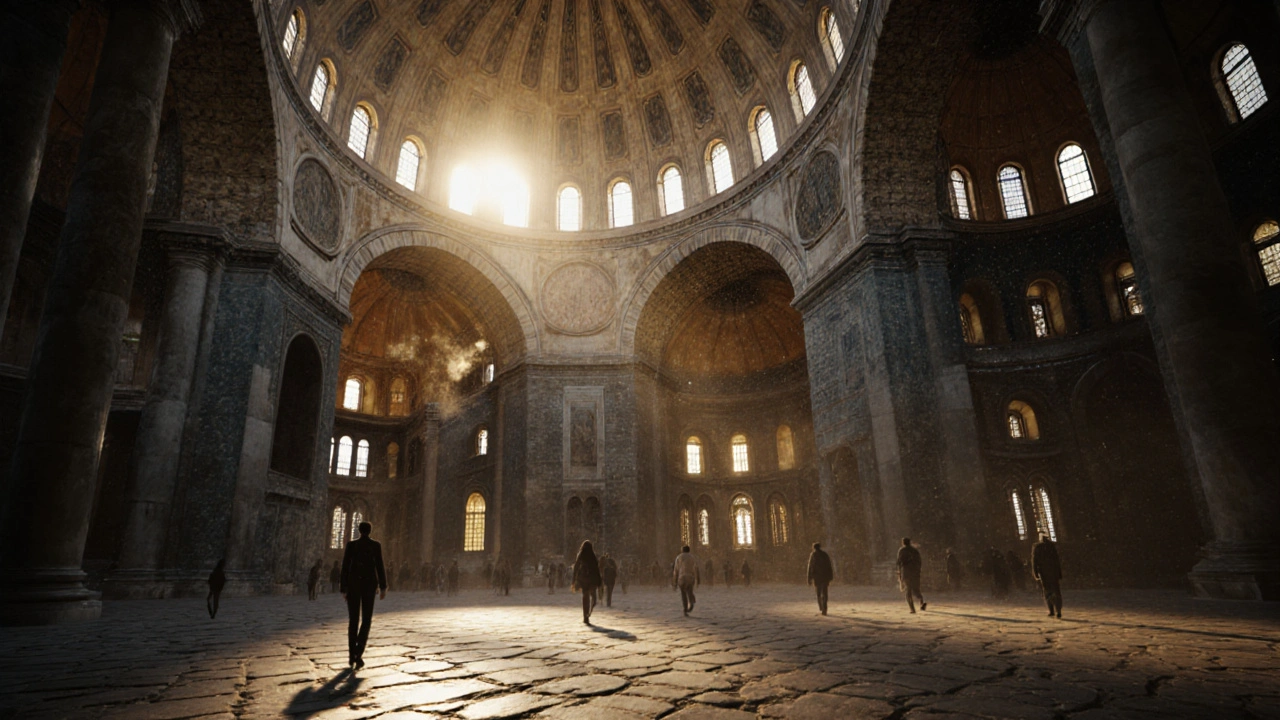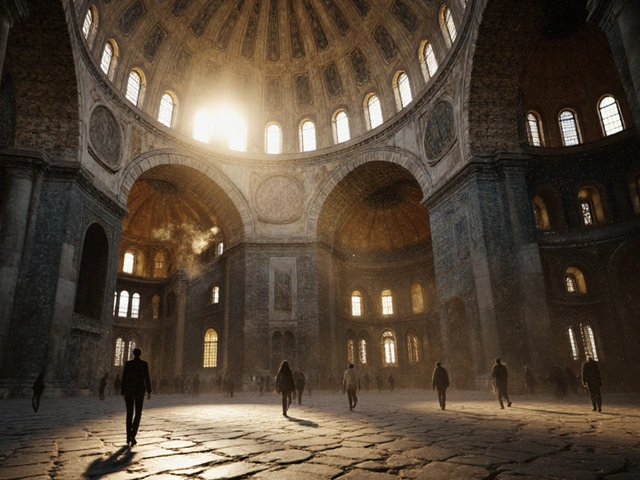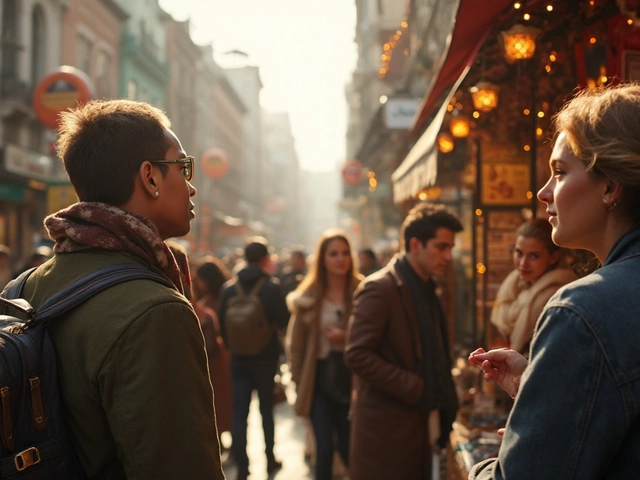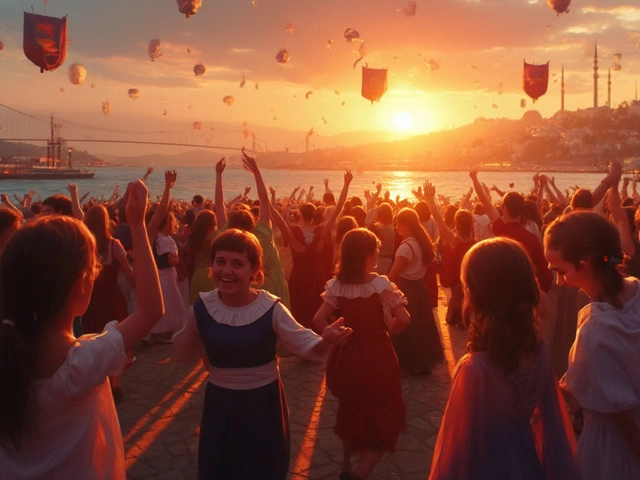When you walk through the streets of Istanbul, past the bustling bazaars of Eminönü and the ferry docks where locals rush to catch the morning crossing to Kadıköy, one structure towers above everything else-not just in height, but in meaning. Hagia Sophia isn’t just another Istanbul attraction; it’s the city’s heartbeat, its silent witness to empires rising and falling, faiths shifting, and generations living beneath its dome. If you’ve ever stood beneath its vast ceiling, feeling the weight of centuries in the hush between prayers and tourist whispers, you know it’s more than stone and mortar. Here are 10 facts about Hagia Sophia that even many Istanbul residents don’t know.
It was built in just five years-faster than a metro line extension
Emperor Justinian I ordered Hagia Sophia built in 532 AD after the Nika Riots destroyed the previous church. He didn’t wait for permits or public consultations. He gave the architects Anthemius of Tralles and Isidore of Miletus one goal: make something no one had ever seen. They did. In just five years, 10 months, and 4 days, the largest church in the world was finished. For comparison, Istanbul’s Marmaray tunnel under the Bosphorus took 11 years to complete. Back then, they used slave labor, 10,000 workers, and marble shipped from across the empire-from Egypt, Greece, and even as far as the Levant. The dome? 31 meters wide. No arches, no columns holding it up from below. Just pure engineering magic.
The dome was once thought to be held up by angels
When the dome first rose over Constantinople, people didn’t understand how it stayed up. No visible supports. No buttresses like in later Gothic cathedrals. To the Byzantines, it looked like the heavens were literally resting on the building. A popular legend said angels held it in place with invisible hands. Even today, if you stand at the base of the dome in the early morning light-when the sun hits the golden mosaics just right-you can see why. The light seems to float. The structure doesn’t feel grounded. It feels divine.
It once had a mosque’s minarets built into its walls
After the Ottoman conquest in 1453, Sultan Mehmed II didn’t tear Hagia Sophia down. He converted it into a mosque. But he didn’t just hang a crescent on the roof. He added four minarets-one on each corner-using the existing structure as a foundation. Two were built by the architect Mimar Sinan, the same man who designed the Süleymaniye Mosque. The minarets weren’t just for the call to prayer; they were political statements. Each one signaled Ottoman power. You can still see the difference in stone: the older Byzantine blocks are rougher, darker. The Ottoman additions are smoother, lighter. Walk around the building and trace the change in texture. It’s like reading history with your fingers.
The giant calligraphy disks are bigger than your living room
Inside, hanging from the dome’s arches, are four massive wooden calligraphy panels, each over 7 meters tall. They bear the names of Allah, the Prophet Muhammad, and the first four caliphs. Made in the 19th century by calligrapher Kazasker Mustafa Izzet Efendi, they were crafted from a single piece of wood each. The letters are carved and filled with gold leaf. If you’ve ever stood in front of the giant Iznik tiles at Topkapı Palace, you know how much detail goes into Ottoman art. These disks are on a whole other scale. They’re so large, you need to step back-past the spot where tourists take selfies with their phones held high-to see the whole thing.

It was the world’s largest cathedral for nearly 1,000 years
From 537 until 1520, when the Süleymaniye Mosque was completed, Hagia Sophia held the title of the largest enclosed space in the world. Even today, its interior volume-over 76,000 cubic meters-could fit the entire interior of the Galata Tower inside it, with room to spare. That’s not just big. That’s imperial ambition made physical. Imagine being a merchant from Venice, arriving by sea, and seeing this dome rise above the city like a second sky. No wonder it became the model for every major mosque in the Ottoman Empire.
The mosaics were covered in plaster-for 400 years
After the Ottoman conversion, Islamic law forbade images of people in places of worship. So the Christian mosaics of Christ, the Virgin Mary, and saints were covered with plaster. Not destroyed. Covered. For centuries, they lay hidden beneath layers of whitewash. In the 19th century, during a restoration under the Fossati brothers, workers peeled back the plaster and found the mosaics still vivid. Some were damaged, yes. But many were untouched. One of the most famous-the Deesis mosaic of Christ flanked by Mary and John the Baptist-was found with its gold background still gleaming. Today, you can see it in the southern gallery, where the light from the windows hits it just right. Locals say if you visit on a clear spring morning, the gold looks like it’s lit from within.
It survived earthquakes that leveled other buildings
Istanbul sits on a fault line. Since its construction, Hagia Sophia has survived at least four major earthquakes. In 558, just 20 years after it opened, the original dome collapsed. It was rebuilt with a more sloped design, making it more stable. In 1766, another quake cracked the dome so badly, the Ottomans had to reinforce it with iron chains-some of which are still visible today, wrapped around the base of the dome like metallic ribs. These chains were added not just for safety, but as a spiritual act. People believed they held back divine wrath. Today, engineers say the building’s flexibility-its ability to sway slightly-is what saved it. Unlike rigid modern structures, Hagia Sophia breathes with the earth.
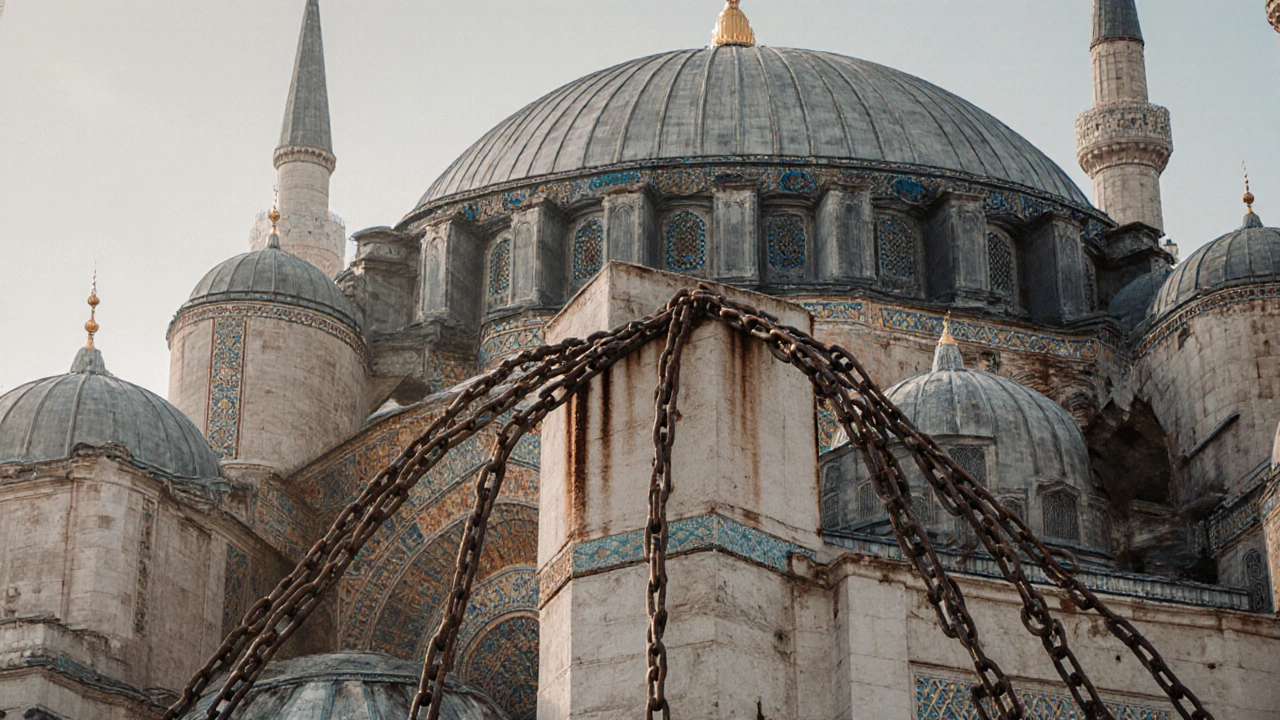
The building’s weight is distributed by 40 windows
Look up. Around the base of the dome, there are 40 windows. Not just for light. Each one reduces the weight the dome has to carry. The architects designed them to let in light, yes-but also to lighten the load. This was the earliest known use of a “lightweight dome” system. Modern architects study it. The same principle is used in the new Istanbul Airport terminal. The difference? Hagia Sophia did it with stone and mortar. No steel. No concrete. Just genius.
It was a museum for 86 years-and locals still argue about it
After the fall of the Ottoman Empire, Atatürk turned Hagia Sophia into a museum in 1935. For decades, it became a symbol of secular Turkey. Tourists from Paris, Tokyo, and New York came to see it. Locals came too-especially on weekends, when families from Üsküdar or Bakırköy would take the tram to Sultanahmet. But in 2020, it was reconverted into a mosque. The decision sparked debate. Some saw it as a return to heritage. Others feared the loss of its universal legacy. Today, you can still visit. But during prayer times, non-Muslims are asked to leave the main floor. You can still explore the galleries, the upper walkways, the courtyard. The building remains open to all-just not all at once.
The dust beneath your feet is centuries old
Walk slowly through the main nave. Look down. The floor isn’t marble. It’s a mix of stone, brick, and worn tile, layered over centuries. People have walked here since the 6th century. Byzantine emperors. Ottoman sultans. Russian pilgrims. French diplomats. Turkish schoolchildren on field trips. Even the boots of soldiers who marched through during the 1918 armistice. The dust under your shoes? It’s not just dirt. It’s time. If you’ve ever stood in the Grand Bazaar and felt the weight of a thousand transactions, Hagia Sophia gives you the same feeling-but deeper. It’s not just a monument. It’s a living archive.
Hagia Sophia doesn’t belong to one religion, one empire, or one era. It belongs to Istanbul. To the fishermen on the Golden Horn who see its silhouette every morning. To the students at Marmara University who study its architecture. To the grandmothers who still whisper prayers in the corner near the mihrab. It’s not just an Istanbul attraction. It’s the city’s soul, carved in stone and lit by gold.
Can I visit Hagia Sophia during prayer times?
Yes, but access is restricted. During the five daily prayer times, non-Muslim visitors are asked to stay out of the main prayer area. You can still explore the upper galleries, the courtyard, and the museum section. The best time to visit without crowds is early morning, right after opening. Locals recommend arriving by 8:30 AM-before the tour buses from Cappadocia and Antalya arrive.
Is there a dress code for visiting Hagia Sophia?
Yes. As a functioning mosque, modest clothing is required. Women should cover their heads and wear long sleeves and skirts or pants. Men should avoid shorts. Scarves are available at the entrance, but they’re often thin and uncomfortable. Bring your own. Many Istanbul residents recommend keeping a lightweight scarf in your bag if you plan to visit multiple religious sites-like the Blue Mosque or Süleymaniye.
Why are there iron chains around the dome?
They were added after the 1766 earthquake to help stabilize the dome. The chains wrap around the base of the dome’s support structure, acting like a belt to prevent further cracking. Locals once believed they held back divine punishment. Today, engineers see them as early seismic reinforcement. You can still see them clearly from the ground floor. They’re not decorative-they’re functional.
What’s the best way to get to Hagia Sophia from Taksim?
Take the M2 metro line from Taksim to Sultanahmet station-it’s a direct 20-minute ride. Get off at the last stop, and walk 5 minutes through the park toward the Blue Mosque. Avoid taxis during rush hour; traffic on the Bosphorus Bridge and around Eminönü can double your travel time. Many Istanbul residents prefer the tram (T1 line) from Kabataş or Karaköy-it’s scenic, cheap, and drops you right at the entrance.
Are the mosaics still visible after the 2020 re-conversion?
Yes. All mosaics remain uncovered and visible. The decision to reconvert Hagia Sophia into a mosque did not include covering the Christian imagery. The mosaics are protected by glass and lighting systems. In fact, the Turkish government invested over 2 million Turkish lira in new LED lighting to highlight them better. You’ll see them more clearly now than during the museum years.
Is there a place to rest near Hagia Sophia after touring?
Just across the street, in the courtyard of the Sultanahmet Park, there are shaded benches and a small café run by a family from Konya. They serve Turkish coffee with a side of baklava-perfect after climbing the gallery stairs. Locals call it the "Hagia Sophia Pause." It’s quiet, authentic, and rarely crowded. Skip the tourist cafés with inflated prices. This one’s where Istanbul residents go.
